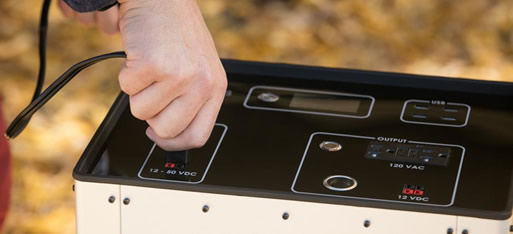This article comes from Humless, a power storage solutions provider. Read more articles here.

Did you know that lead-based batteries are typically more than three times the weight of their lithium counterparts?
For decades, lead has been the go-to material for batteries. However, out of all non-radioactive metals, lead is the heaviest. Lithium, in contrast, is the world’s lightest metal.
At first glance, it would seem that lithium-ion batteries are the pinnacle of rechargeable battery tech with little room for improvement, and that soon lead-based batteries would be on their way out.
But is that really the case? And which is the best battery for a solar energy project? And with several types of lithium batteries available (like the lithium deep-cycle battery), how do you choose the right one?
Here are seven quick figures comparing lead and lithium-based batteries, and what that means for your quest for energy independence and finding the best batteries for solar.
1. Weight: As mentioned, lead is pretty heavy. That means lead-based batteries are typically more than three times the weight of their lithium counterparts.
2. Efficiency: When compared to modern alternatives, lead acid batteries are highly inefficient for both charge and discharge, meaning you’ll see a loss in amps while charging and a fast voltage drop during discharge that decreases the total capacity of your battery. Lithium ion batteries nearly solve the efficiency issue (more on that later).
3. Discharge: When using a lead-based battery, you’ll notice it never discharges more than 80%. In fact, most manufacturers recommend a discharge depth of no greater than 50%, while the lithium ion solar battery achieve almost a 100% discharge.
4. Cycle life: When it comes to batteries you’d typically find in a home or mobile solar setup, most lead batteries achieve just 300 or so lifetime cycles, while lithium batteries can hit 700 to 800. On top of that, cycle life in lead acid batteries is highly dependent on the level of discharge we mentioned above, while standard lithium ion batteries are only slightly affected by discharge level.
5. Voltage: You’ll see nearly constant voltage levels through the whole discharge cycle of a lithium ion battery, while lead batteries experience a constant drop of voltage. Maintaining voltage translates to better efficiency.
6. Cost: Lead-based batteries are the cheapest to produce, but the real cost of owning a lithium battery is far lower when you factor in performance and the battery’s better longevity.
7. Environmental impact: Solar lithium batteries are the superior option in terms of environmental impact.
The discovery of lithium and its later adaptation into better, safer, more efficient batteries was a huge step forward for just about everyone interested in off-the-grid living.

